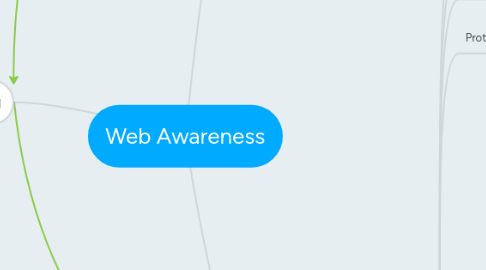
1. Continually Changing
1.1. Unofficial rules
1.2. "Netiquette"
1.2.1. Do not do anything online you wouldn't do in real life
1.2.2. Do not send email at night
1.2.3. Do not spam or follow spam
1.2.4. Don't personally insult others
1.2.5. Use security to protect data
1.2.6. Be honest, but use discretion when sharing information
2. Digital Citizenship
2.1. 3 Rules:
2.1.1. Respect Yourself
2.1.2. Respect Intellectual Property
2.1.2.1. Copying and pasting is a big issue
2.1.2.2. Make sure to give credit to author or artist
2.1.2.3. Pirated software is another issue
2.1.3. Respect Others
2.2. Creators vs. Consumers
2.3. 9 Elements
2.3.1. Digital Access
2.3.2. Digital Commerce
2.3.3. Digital Communication
2.3.4. Digital Literacy
2.3.4.1. Information should be carefully scrutinized before it is accepted as fact
2.3.4.1.1. AUTHENTICITY
2.3.5. Digital Etiquette
2.3.6. Digital Law
2.3.7. Digital Rights and Responsibilities
2.3.8. Digital Health and Wellness
2.3.9. Digital Security
2.4. Stop Cyberbullying by creating ethical digital citizens
3. Safety
3.1. Awareness
3.2. Responsibility
3.3. "Think before you click."
3.4. Protect themselves
3.4.1. Changing Privacy Settings
3.4.2. Not sharing info with strangers online
3.5. Digital Issues
3.5.1. Cyber-bullying
3.5.2. Cyber Security
3.5.3. Excessive internet use
3.5.4. Gambling
3.5.5. Online hate
3.5.6. Online Marketing
3.5.6.1. Kids are often targeted in marketing
3.5.6.1.1. "Pester power"
3.5.6.2. Psychology + Marketing
3.5.6.3. Brand Name Loyalty
3.5.6.4. Marketing of adult entertainment to kids
3.5.7. Privacy
3.5.7.1. Your entire life is online
3.5.8. Pornography
3.5.8.1. Early exposure to sexually explicit material =negative impact
3.5.8.1.1. prematurely sexualizes children
3.5.8.1.2. Incites experimentation
3.5.8.2. Continued exposure negative for values and views of healthy relationships
3.5.8.2.1. Risk of victimization (personal boundaries become blurred)
3.5.8.2.2. social acceptance of high risk behaviour
3.5.9. Sexual Exploitation
3.5.10. Sexting
3.6. Teaching Internet Safety
3.6.1. Through Gaming
3.6.2. Through Analogies & Student generated projects
3.6.3. Through role playing
3.6.4. Guest Speakers
3.6.5. Having students be teachers
3.6.6. 3rd party resources
3.6.7. Self-created curriculum
3.6.8. Research lesson
3.6.9. School wide program
3.7. Teachers Provide Online Resources
3.7.1. Webquest
3.7.1.1. Easier to find good research
3.7.1.2. Students aren't searching all over the internet and seeing everything

